Aniakchak National Monument and Preserve – the most remote of all
The most remote of all national park units is Aniakchak National Monument and Preserve in Alaska. Although only an hour flight from King Salmon, this park unit is visited by fewer than 100 people per year. Even most of the National Park rangers we spoke to had never been there, although many said they had tried.
You may ask: why is Aniakchak so hard to get to? Aniakchak National Monument and Preserve is a volcanic crater on the Alaska Peninsula, along the Aleutian mountain range.There are no roads out there. The only ways to get into the crater are either on foot – necessitating a multi-day backpacking trek making your own trail through bear country, climbing up and over the crater rim – or by taking a float plane and landing on Surprise Lake inside the crater.
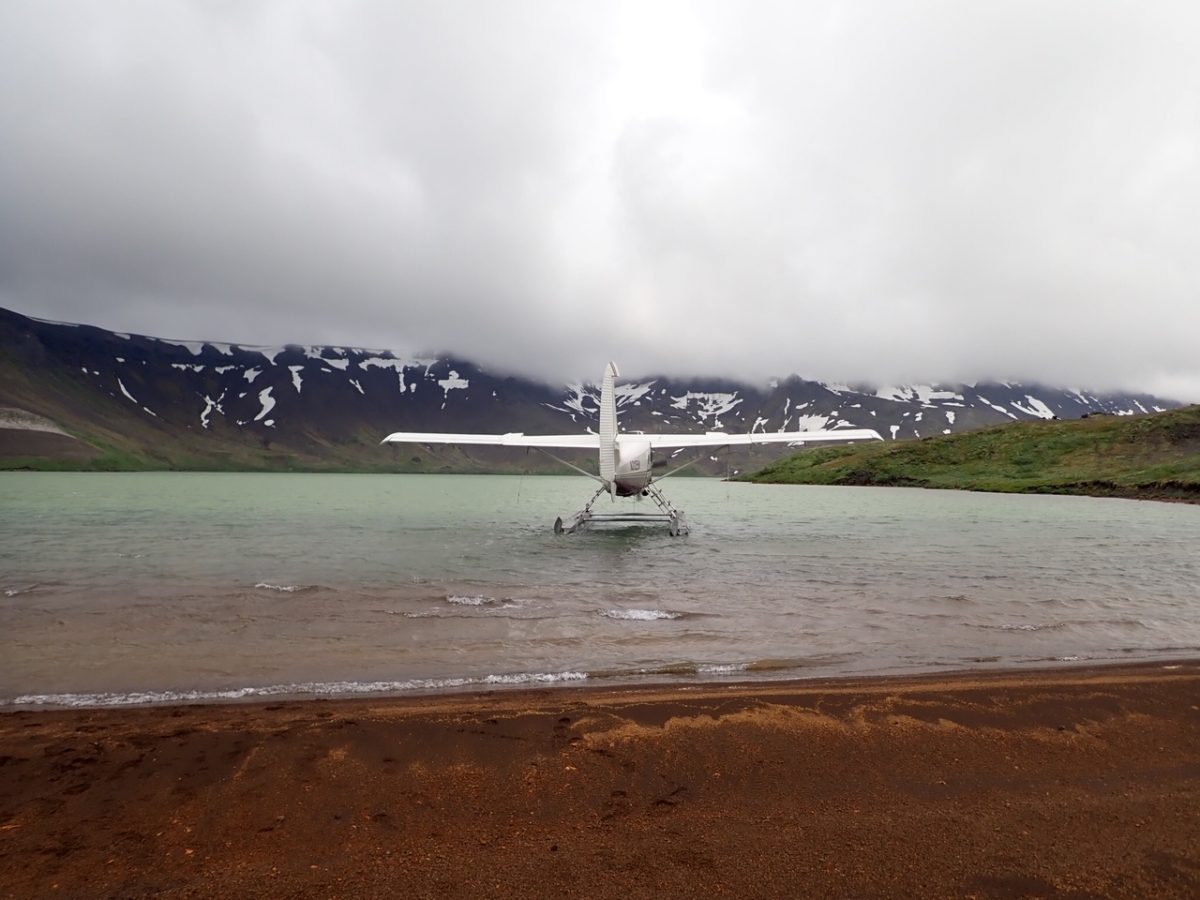
Flying in sounds easy. Folks take bush planes all over Alaska to get to small villages or remote fish camps. But Aniakchak has its own weather system, with low clouds and fog that effectively blocks the “Gates”. There is no weather monitoring system in the crater, so pilots need to rely on information from the general area and then use their judgement to decide if it will be clear to fly.
We waited 3 days before there was finally a window where our pilot was willing to try to get in. We made it through, but he was pretty anxious to unload our stuff and get out again before the window closed! And the day we were due to leave, the fog was so low in the crater we couldn’t even see the next tent. Thankfully it cleared later in the day and we were able to communicate via satellite phone, so he came and got us.
Aniakchak National Monument and Preserve
Hard to get to, but worth the effort. Aniakchak is truly an amazing place. Picture yourself being dropped off on a beach inside a bowl-like crater about 6.5 miles across, surrounded by jagged peaks that form the snow-capped crater rim looming 2,000 feet above you, with a volcano (Vent Mountain) as the centerpiece. Our group of 5 were the only people in the crater. Wow! It was so quiet you could hear a lone seagull a mile away and a waterfall from across the lake.
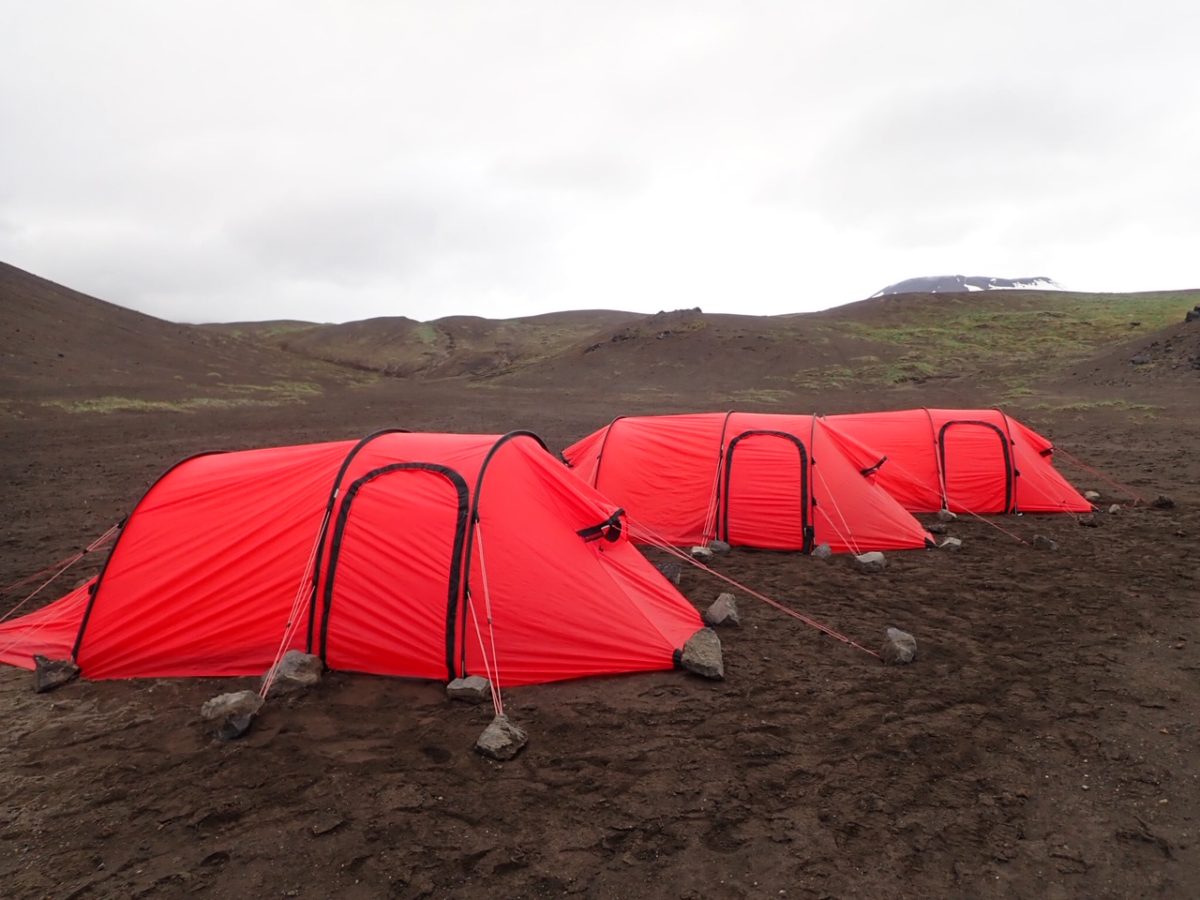
The crater was formed 3,700 years ago when a 7,000 foot mountain erupted, a cataclysmic event with hot ash flows that reached across the peninsula to the Pacific Ocean on one side and Bristol Bay in the Bering Sea on the other side, triggering a tsunami. Over time, the caldera filled with water (like Crater Lake in Oregon), but some 2,000 years ago one of the caldera walls collapsed and the water flowed out – creating Aniakchak River and leaving a smaller lake inside the caldera, Surprise Lake. The force of the water rushing out of the caldera carved the “Gates”.
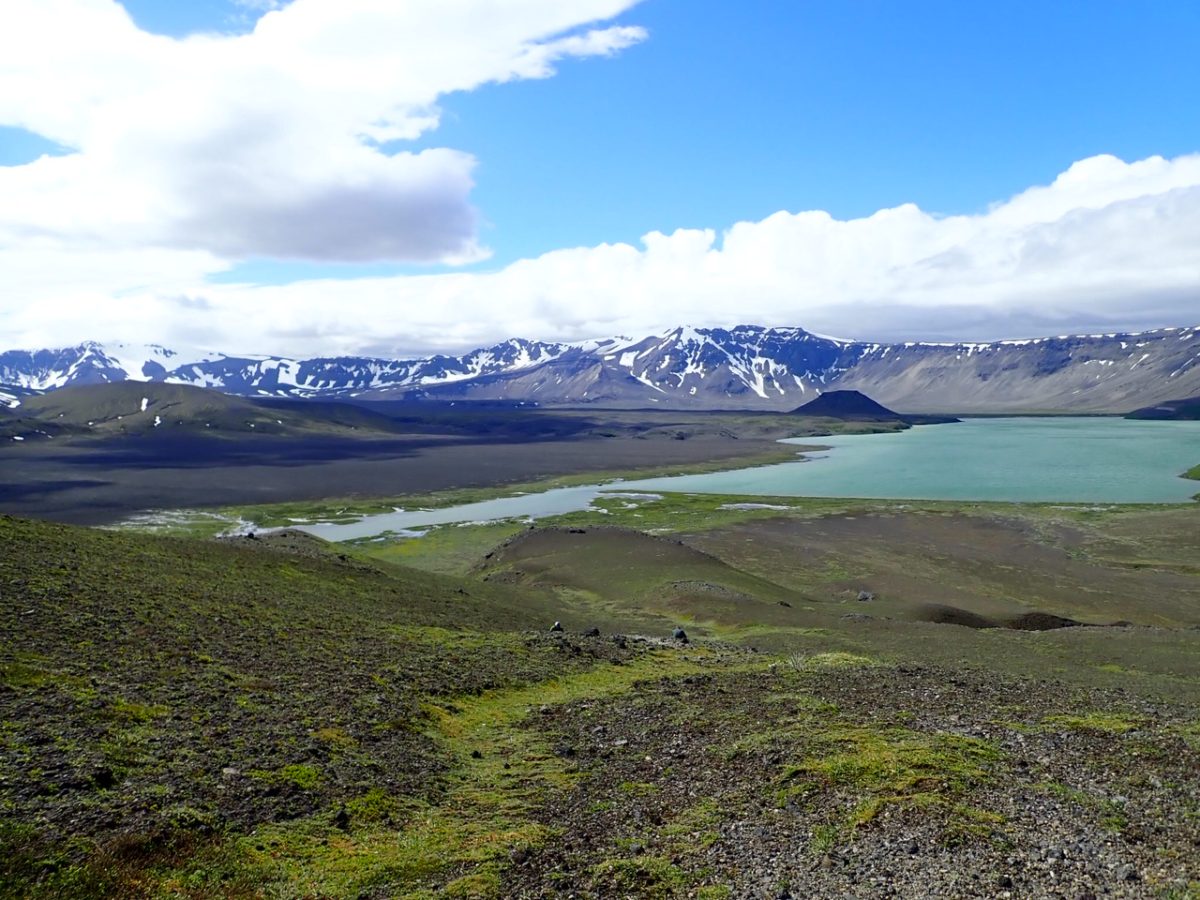
This is not an extinct volcano. Vent Mountain last erupted in 1931. This and the surrounding volcanos are all part of the “Ring of Fire” – the most seismically active area in the world.
Hiking in Aniakchak National Monument
So, as long as you aren’t concerned about any imminent volcanic eruption or being miles from civilization… Aniakchak is a pretty amazing place to visit. You can set out in any direction and walk for miles. There are no trails, but you can see all the way to the caldera rim (when it is not foggy). The caldera is filled with the remains of the eruption… ash, pebbles and boulders. It makes for pretty easy walking. Lots of interesting colored rocks, some with fossils. There are also many colors of pumice rock. So light, it floats!
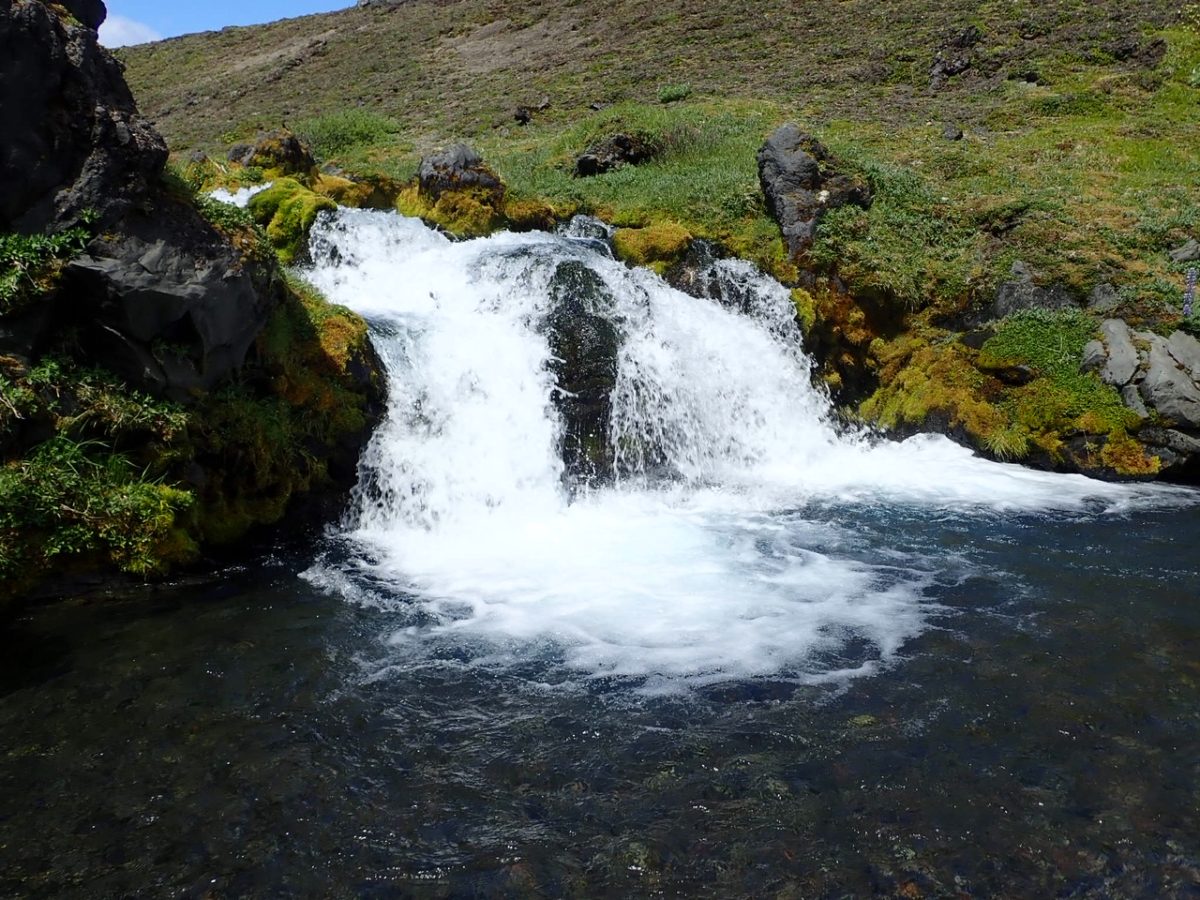
Vegetation has been making its slow come back. Lush grass and small alders thrive near the glacier-fed streams and scenic waterfalls; sandy tufts support grasses; and the tundra is covered with moss, tiny wildflowers and ground covering plants like blueberries. This fragile environment is teeming with life! It is hard not to stop every few minutes and take photos.
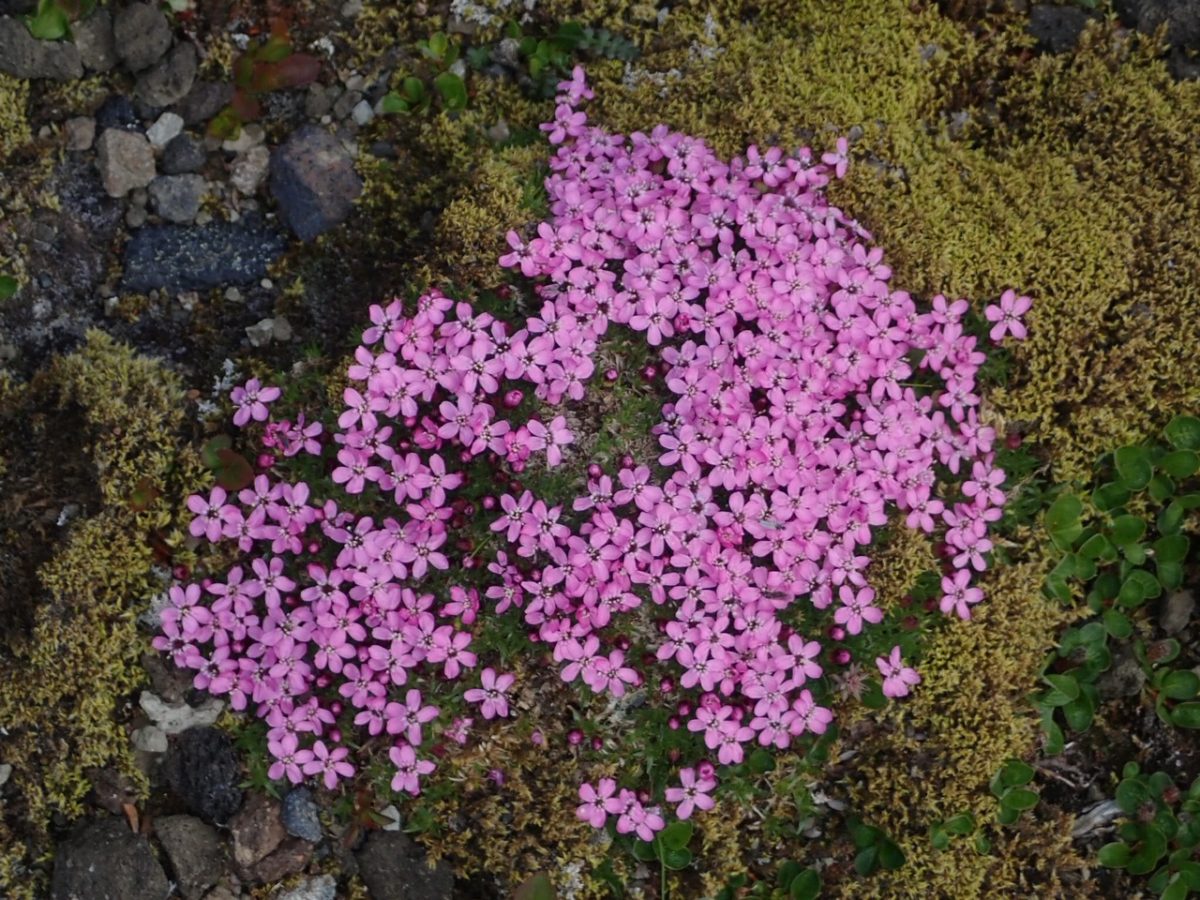
As we walked around, we tried hard to “leave no trace” – stepping lightly around the plants and trying not to dislodge the moss that supports them. We also spread out so as no to create “social trails” other than those the animals had created. Upon reflection, it is probably a good thing that there are so few visitors here. Too many people on this fragile tundra would cause irreparable damage.
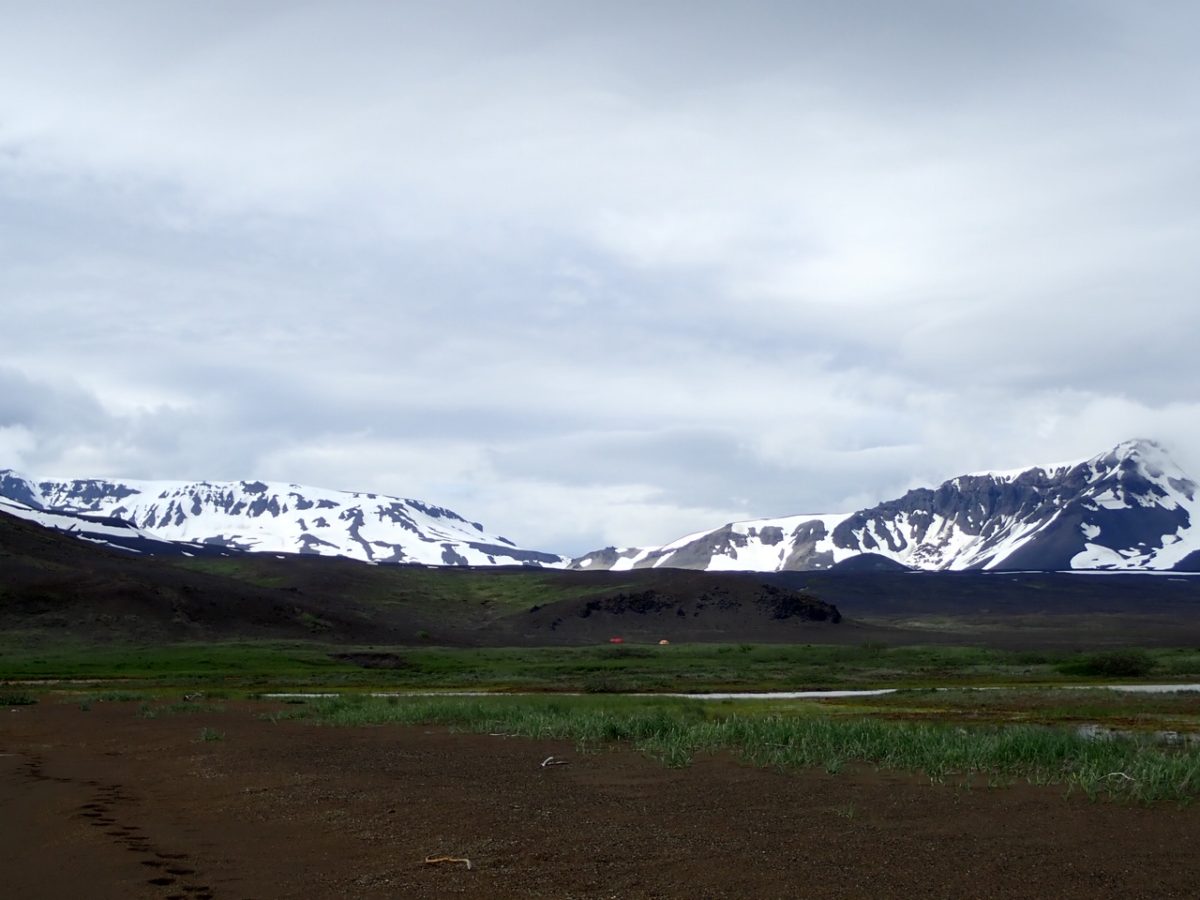
Life in Aniakchak National Monument
Along with plant life the caldera is full of animals. There are tracks everywhere… bear, wolves and caribou… crossing and following each other. We were fortunate to see them all. Immediately upon landing on Surprise Lake, we surprised two bears, who quickly ran away. Thank goodness they did not return. During our week stay, we only saw one other bear, at a great distance and walking the other way. Whew!
Because there are so few visitors here, the animals were quite curious. We saw a wolf in the distance watching us, not quite sure what to make of the pack of brightly colored “Skittles” walking across the tundra. A small group of caribou acted the same. They moved towards us, stopped, looked, backed up and then came closer, stopped, looked and backed up. After doing this a few times, they simply wandered away!
One day we startled a small fox who ran to the other side of a small ravine, then stopped there to give us a good look. He sat down, looked us over, and then gave us a little show – rolling on his back like a doggie and then sitting and grooming himself. It is simply amazing to see animals in their own home like this.
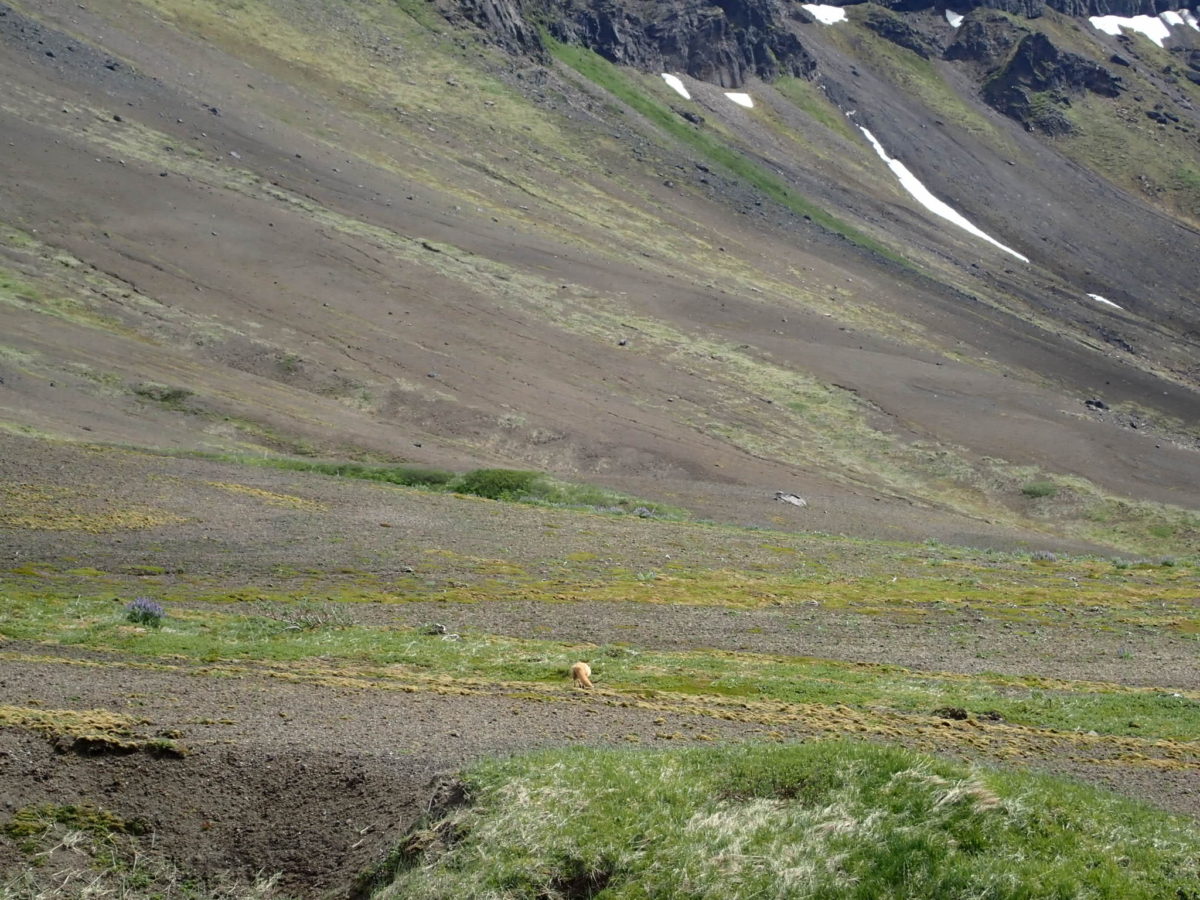
Along with bear, wolves, caribou and fox, we also spotted ground squirrels and saw a huge Beaver lodge – “Aniakchak Lodge”. We also saw a few fish and lots of birds – plovers, snow buntings and American Dippers – their coloring making them almost invisible.
Weather in Aniakchak National Monument
Although we were only there a few days, Aniakchak showed us many faces… our first day was so windy we had to get rocks to make sure our tents didn’t blow away. During the week, the wind shifted to come from each directions, often swirling. But the wind kept away the bugs – always a good thing.
A couple of the days we were there, the caldera was filled with a thick fog that took hours to burn off. One day was amazingly clear – so clear that when we climbed up one of the small dome mountains (Bolshoi Peak), we had a 360 degree view of the entire crater with not a single cloud in the sky.
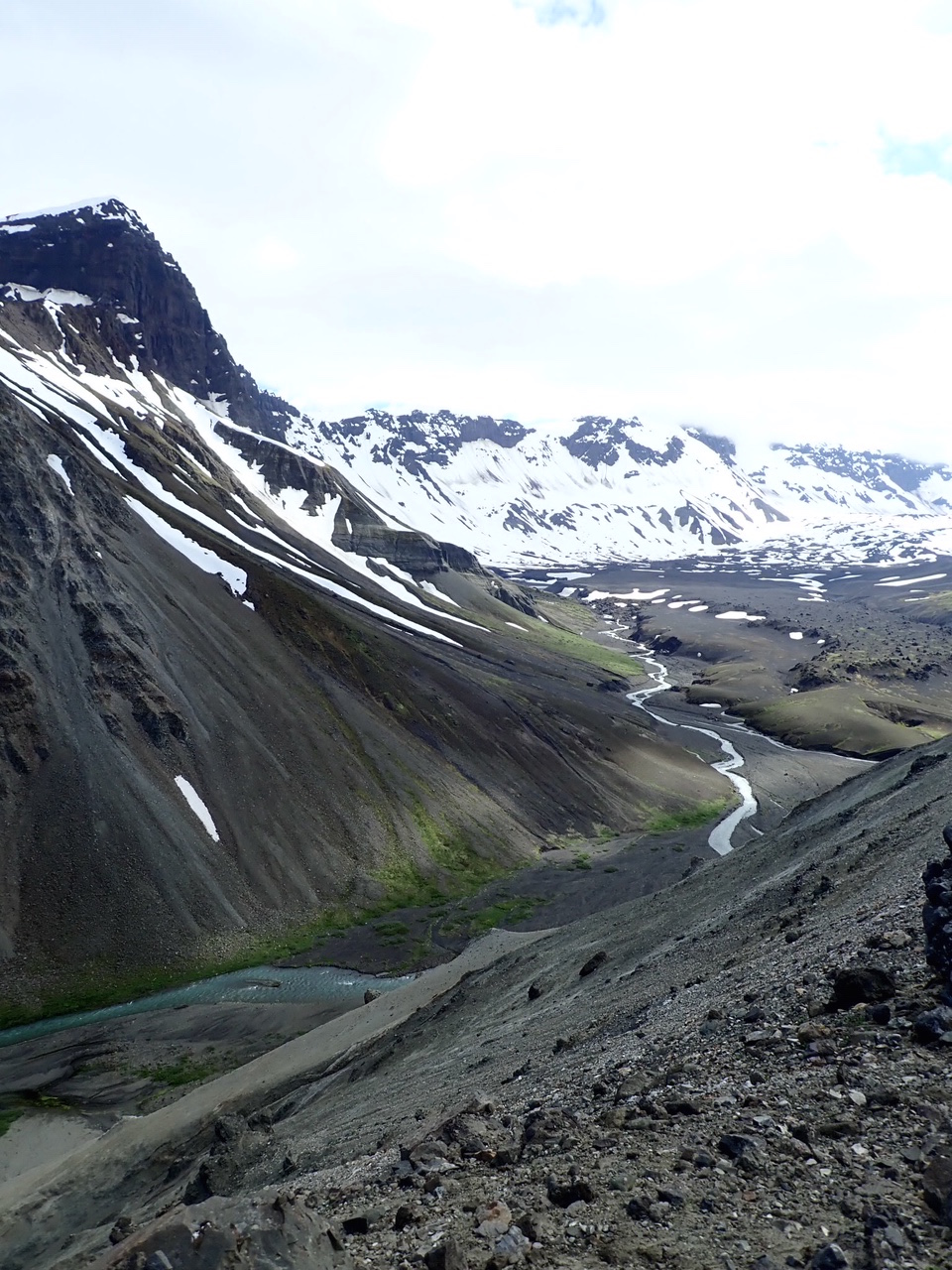
Remote. Yes.
Amazing. Yes.
Worth the trip. Yes.
#FindYourPark
#SeeAmericaFirst
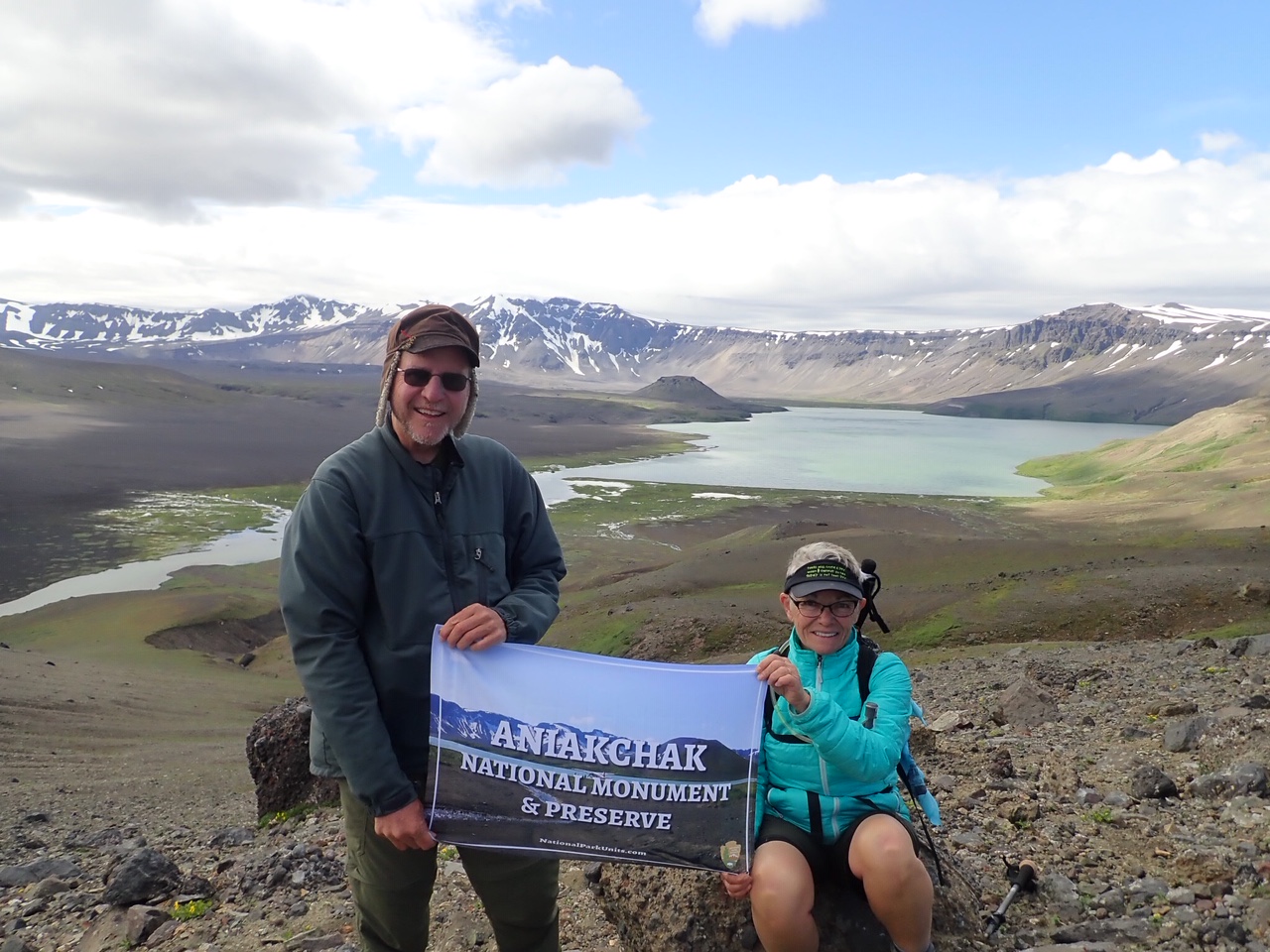
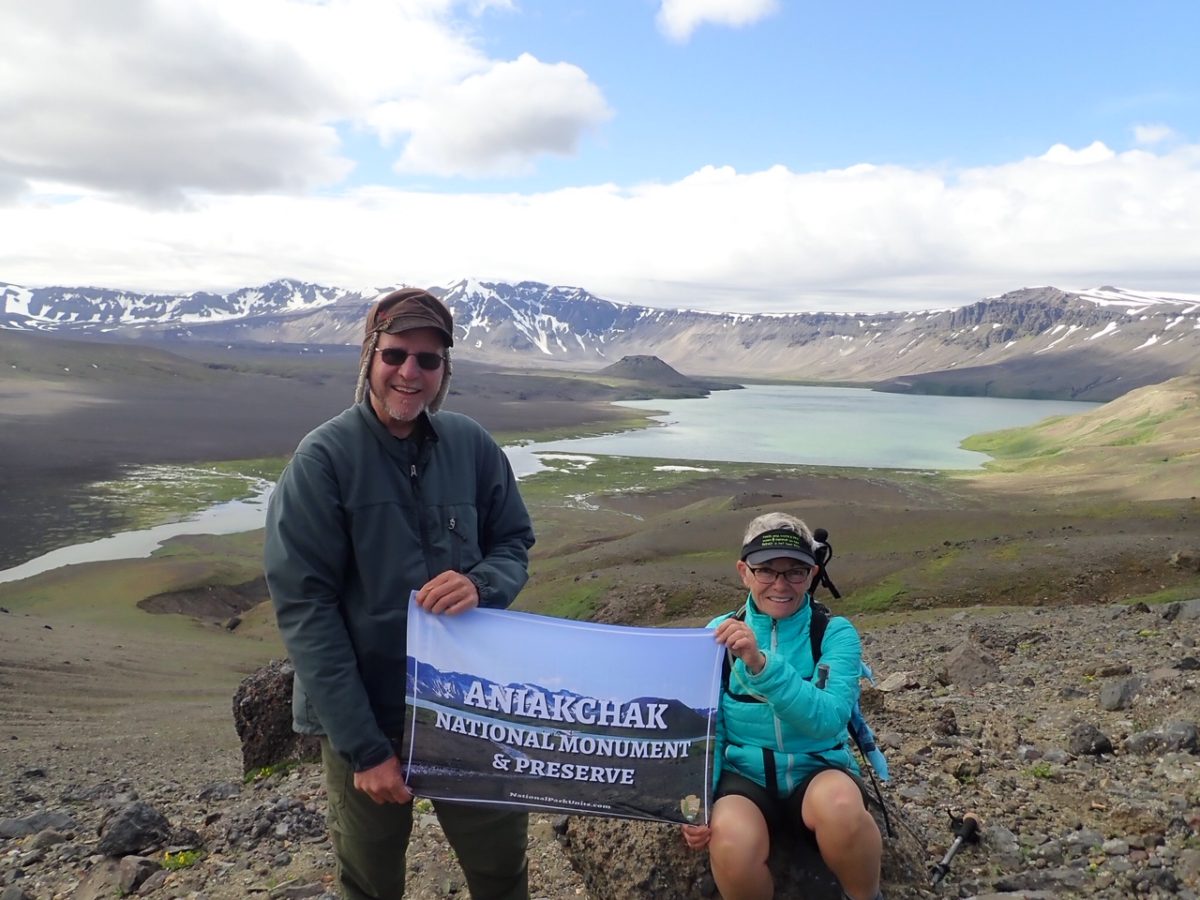
Amazing the only two parks we have left to do in Alaska is Yukon-Charley and Aniakchak. Great stories
Must have been breathtaking!